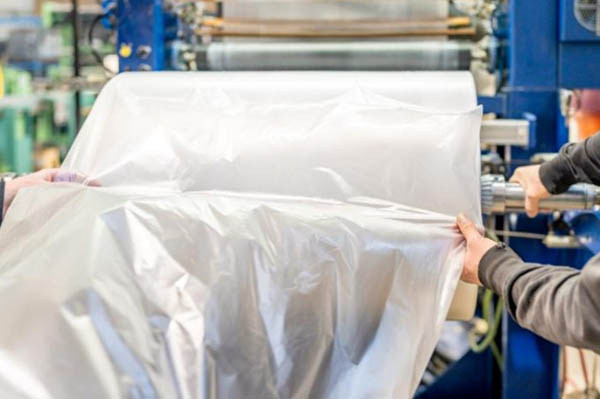Polyvinyl alcohol (PVA) is a synthetic polymer widely used in various industries, including textiles, paper, and packaging. As environmental concerns grow, PVA packaging has gained popularity due to its water solubility and biodegradable properties. However, many people are still unsure about the safety of PVA plastic, particularly when it comes to human health and environmental impact. This article explores what PVA plastic is, its uses, and whether it is safe.
What is PVA Plastic?
PVA, or polyvinyl alcohol, is a water-soluble synthetic polymer that is produced through the hydrolysis of polyvinyl acetate (PVAc). Unlike other plastics that are derived from petroleum, PVA is unique due to its solubility in water, making it useful in applications where other plastics would not suffice. PVA is also known for its adhesive properties, film-forming ability, and resistance to oil, grease, and solvents.
Uses of PVA Packaging
PVA packaging is commonly used in several industries due to its unique properties:
- Detergent Pods: One of the most well-known uses of PVA is in laundry and dishwasher detergent pods. The PVA film encasing the detergent dissolves in water, releasing the cleaning agents. This makes PVA packaging highly convenient and effective in controlling the dosage of detergents.
- Agricultural Films: In agriculture, PVA films are used to create water-soluble seed tapes and plant nutrient strips. These films disintegrate upon contact with water, helping to reduce plastic waste in farming.
- Medical and Pharmaceutical Packaging: PVA packaging is also used in the medical field for capsules and tablet coatings that dissolve in the stomach or intestines, ensuring controlled release of the medication.
- Industrial Applications: In the industrial sector, PVA films are used for water-soluble bags that contain cement additives, dyes, or other chemicals. When these bags are thrown into the water, they dissolve, releasing the contents without leaving any plastic residue.
Is PVA Plastic Safe for Human Health?
The safety of PVA plastic largely depends on its intended use and how it interacts with the human body and the environment. Here are some considerations:
- Non-Toxicity: PVA is generally considered non-toxic and safe for human use. It has been approved by the U.S. Food and Drug Administration (FDA) for use in food contact applications and pharmaceuticals, indicating that it does not pose significant health risks when ingested in small amounts. This is why PVA packaging is commonly used for items that come into direct contact with food or medicine.
- Biodegradability: One of the key advantages of PVA packaging is its biodegradability. PVA breaks down into harmless substances, including carbon dioxide and water, under microbial action in the environment. This property reduces the potential for long-term environmental pollution, making it a safer alternative to conventional plastics that can persist in the environment for hundreds of years.
- Allergic Reactions and Sensitivities: While PVA is generally safe, some individuals may experience allergic reactions or sensitivities when exposed to PVA films or products. These reactions are rare but may include skin irritation, itching, or redness. Individuals with known sensitivities to synthetic polymers should handle PVA products with caution.
Is PVA Plastic Safe for the Environment?
The environmental safety of PVA packaging is another important aspect to consider. Here are some points to evaluate:
- Water Solubility and Marine Impact: PVA’s water solubility is both an advantage and a potential concern. While it allows for easy dissolution and biodegradation in wastewater treatment facilities, there is concern about its impact on aquatic ecosystems if released in large quantities into natural water bodies. Studies have shown that PVA can degrade in aquatic environments, but the rate of degradation can vary depending on factors such as water temperature, microbial activity, and the presence of other substances.
- Microplastic Concerns: Unlike traditional plastics that break down into microplastics, PVA does not fragment into smaller pieces, reducing the risk of microplastic pollution. This is a significant environmental benefit, as microplastics are known to have harmful effects on marine life and can enter the food chain.
- Manufacturing and Carbon Footprint: The production of PVA, like all plastics, involves energy use and carbon emissions. However, compared to conventional petroleum-based plastics, PVA has a lower environmental impact due to its biodegradable nature and the potential for production from renewable resources. Efforts are ongoing to improve the sustainability of PVA production, including the use of bio-based raw materials and green chemistry techniques.
Conclusion
PVA plastic, particularly in the form of PVA packaging, presents a viable alternative to conventional plastics in many applications due to its water solubility, non-toxicity, and biodegradability. It is generally considered safe for human use and has been approved by regulatory bodies for food and pharmaceutical applications. Additionally, PVA packaging offers environmental benefits by reducing the risk of long-term pollution and microplastic formation.
However, it is important to ensure that PVA products are disposed of properly and do not end up in natural water bodies where their impact on aquatic ecosystems may vary. As with any material, understanding its properties uses, and potential risks is key to making informed decisions about its safety and sustainability. Overall, PVA packaging is a promising solution that, when used responsibly, can contribute to a more sustainable and safer future.
Post time: 08-29-2024


